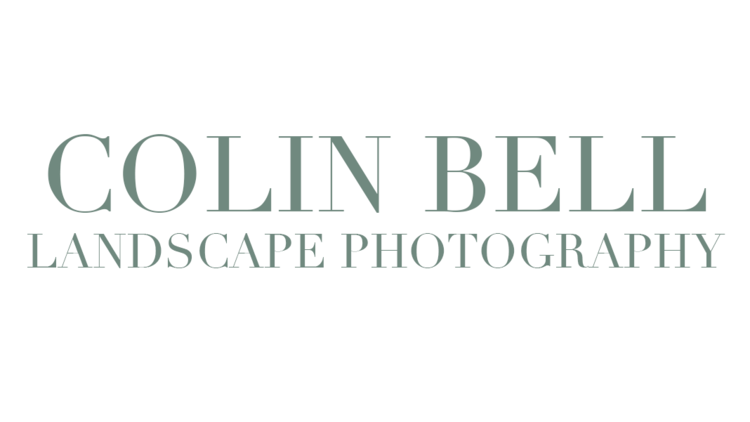This post is adapted from an original article in On Landscape magazine from December 2015
In 2010, a developing health problem which was affecting my hearing, balance and general wellbeing for the previous 7 years, forced me to remove myself from the stress of running a video game development studio and take some time away from full time work.
Over the ensuing few years, without really realising it, landscape photography became part of the healing process for me as a person. Shorn of the professional need to be creative to stay ahead of the market, I replaced that with personal exploration and creating photographs that embodied that discovery.
I spent almost a year photographing in and around Thirlmere reservoir. I’d done a few walks around that area in the past but I chose it because of the relatively unfashionable nature of that area compared to others in the Lakes.
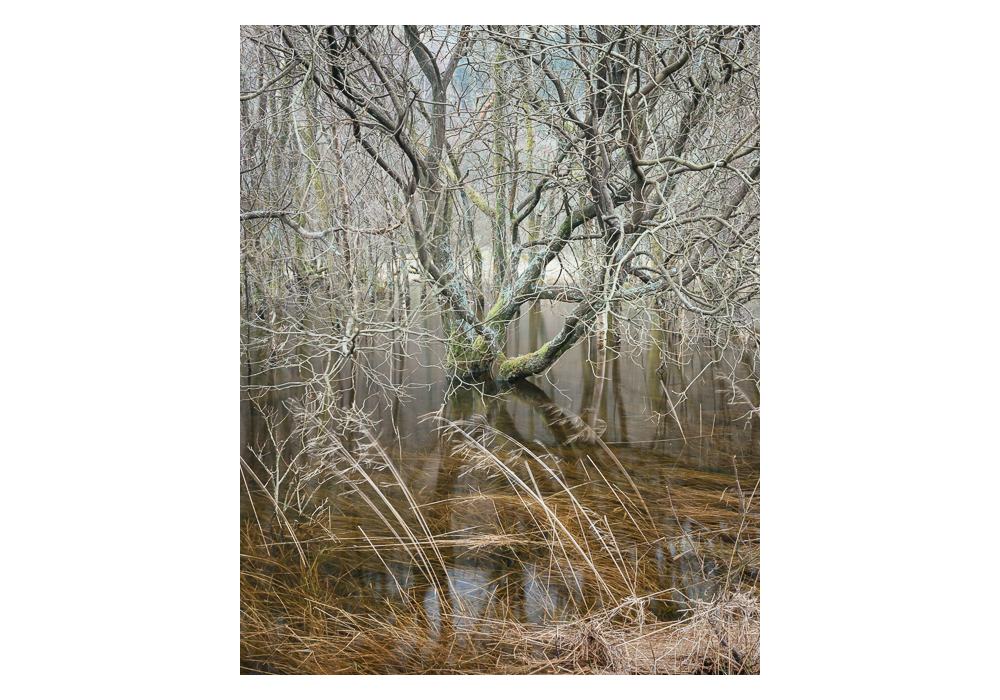
Overflow - from Thirlmere - Paradise Lost?.
What I subsequently discovered was that I loved this way of working. I visited over 60 times that year, just turning up, walking, finding new places and creating photographs that made sense as a whole. The more I did it the more I became fascinated in the history of the area and the more I felt I understood the complexities of the environmental ‘battle’ that had occurred when the Thirlmere Water Scheme was first proposed. Photographs of the area prior to the building of the dam and subsequent flooding showed an incredibly aesthetically beautiful place; as beautiful as any other in the Lakes that was transformed by the joining of Leathes and Wythburn waters to make what we now know as Thirlmere.
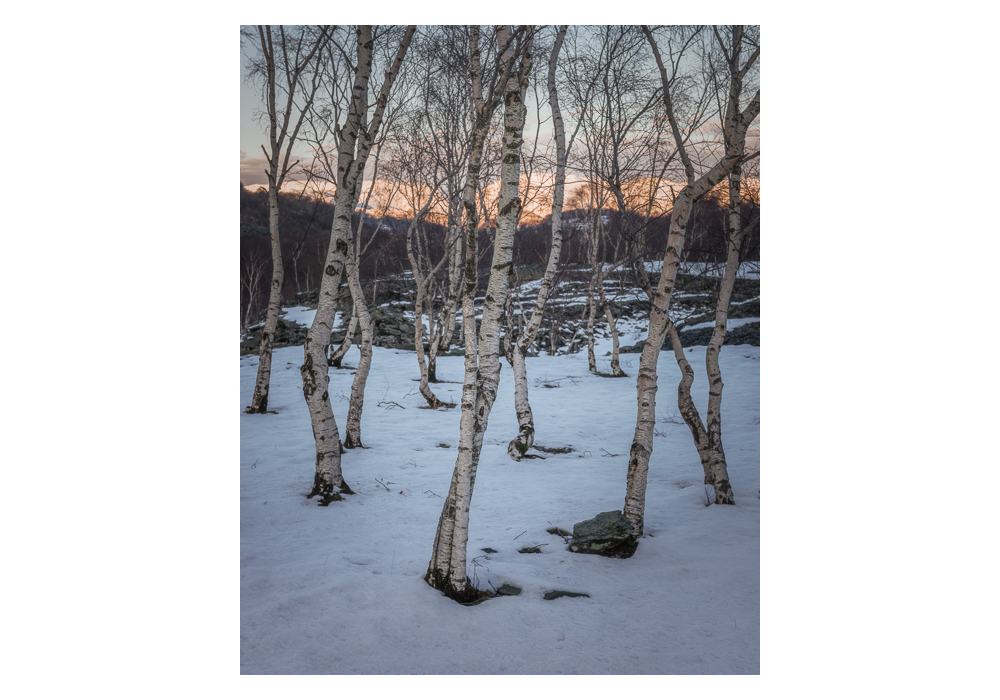
The Last Dance
Yet I also became very aware of how, in the 120 years since, that landscape has healed and brought about new, but different, beauty. It was there at every corner, each new place that I explored had that intoxicating mix of intervention and healing. That project ‘Thirlmere – Paradise Lost?’ was a watershed for me (no pun intended) in terms of shaping my way in photography.
That summer I had flirted with a new area of exploration, Holme Fell. The long summer evenings gave me chance to just enjoy walking and exploring, not particularly for photography purposes but simply for wellbeing. It became an occasional distraction from Thirlmere, not in a bad sense at all, just another place to go when the mood took me. I came to like it and much like Thirlmere the place exhibited the same characteristics of intervention and healing.
And so after feeling that my time at Thirlmere had come to a natural conclusion I decided to make Holme Fell and Hodge Close Quarry my area of discovery for 2015 and beyond. Located between Ambleside and Coniston, although closer to the latter, it was really convenient for me to get to from our little bolthole at Skelwith Fold. Holme Fell is such a wonderful and varied landscape in a very compact space.
There’s Yew Tree Tarn at Holme Fell’s South foot, alongside the A593. Hodge Close Quarry just to the north and about halfway up the fell, accessed by a single track road off the A593. Holme Fell Tarn is between the quarry and the summit of Holme Fell. And then there’s the fell top itself, a little sprawling mix of various smaller summits covered in heather and populated with a spread of silver birch and rowan trees.
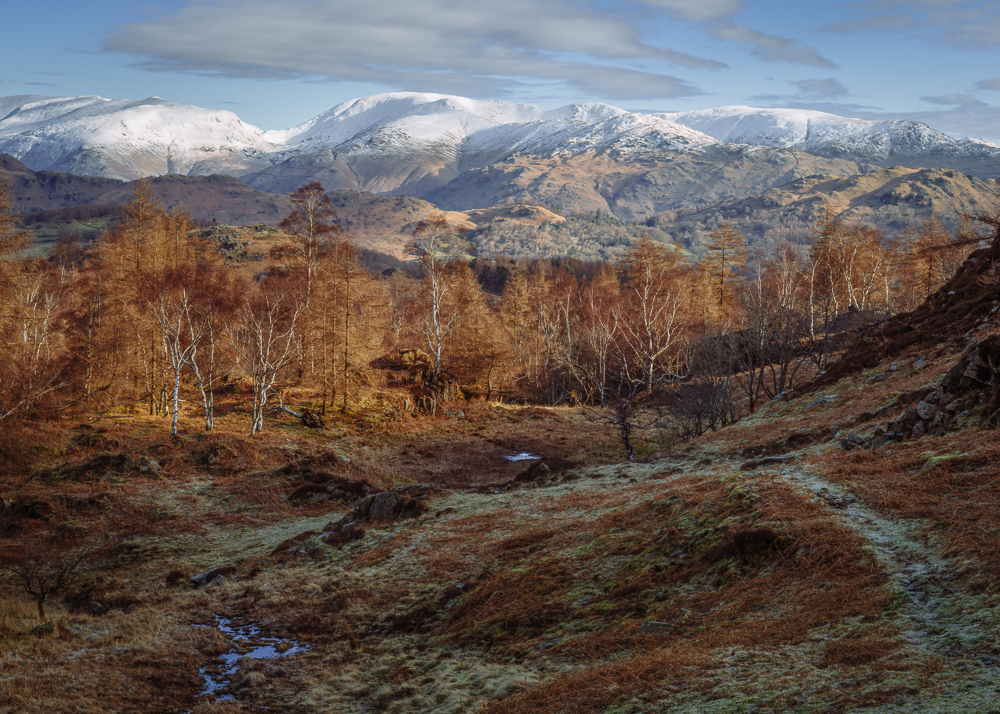
Holme Ground Vista
When I started the project, as with my project at Thirlmere, I had no plans at all apart from to visit frequently, get to know the area see where it took me. Even after a year spent in photographing the area I feel that I’ve only scratched the surface. The quarry itself seems to have become something of a photographic tourist spot, I hadn’t appreciated this at all prior to beginning the project. For me, the beauty of this area lies in the detail, right on the edge of the scars. The quarries are viciously excavated into this magnificent landscape that sits just above the beauty of Little Langdale. Cross-sectioned in places leaving an open wound of disfigurement under the watch of nearby Wetherlam and the more distant Langdale Pikes.
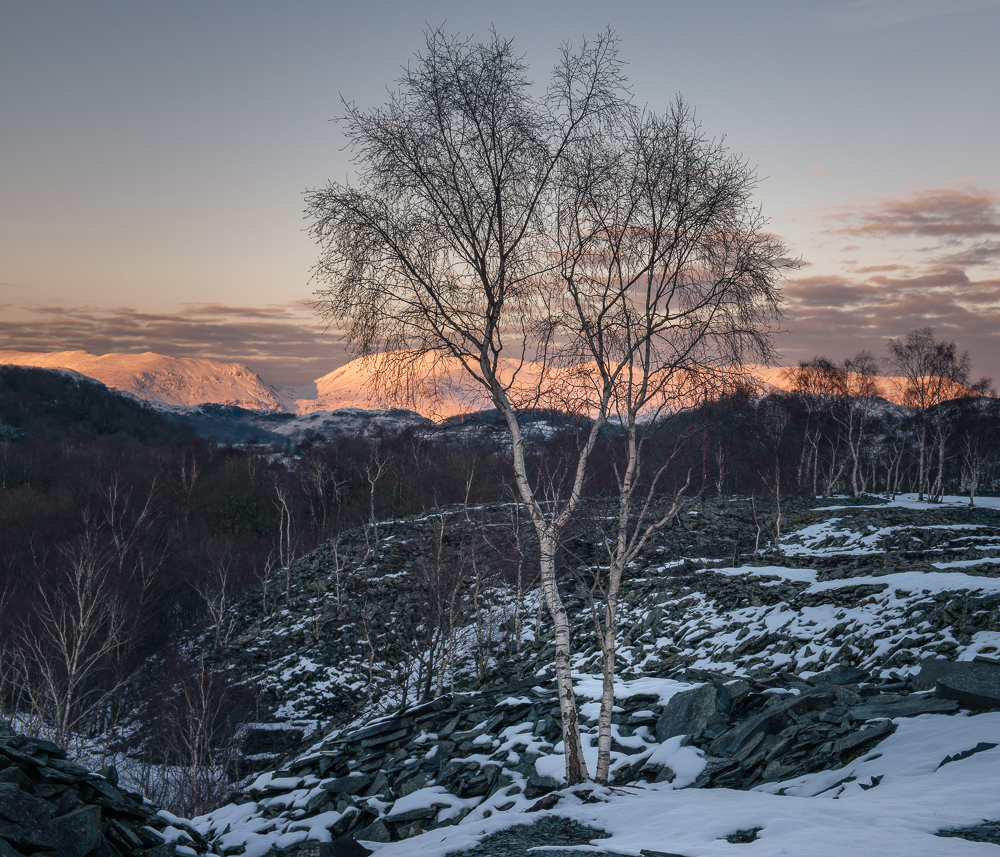
A Winter's Evening
Disused for many years, nature has been left to meliorate the harsh landscape left by the industrial intervention. I have been continually drawn back to the contrasting colour and texture of the resilient trees and ferns growing right on the quarry edge, set against the backdrop of the sheer slate faces. Fascinating in any weather but after rain the blueness of the slate and the saturation of the foliage are accentuated.
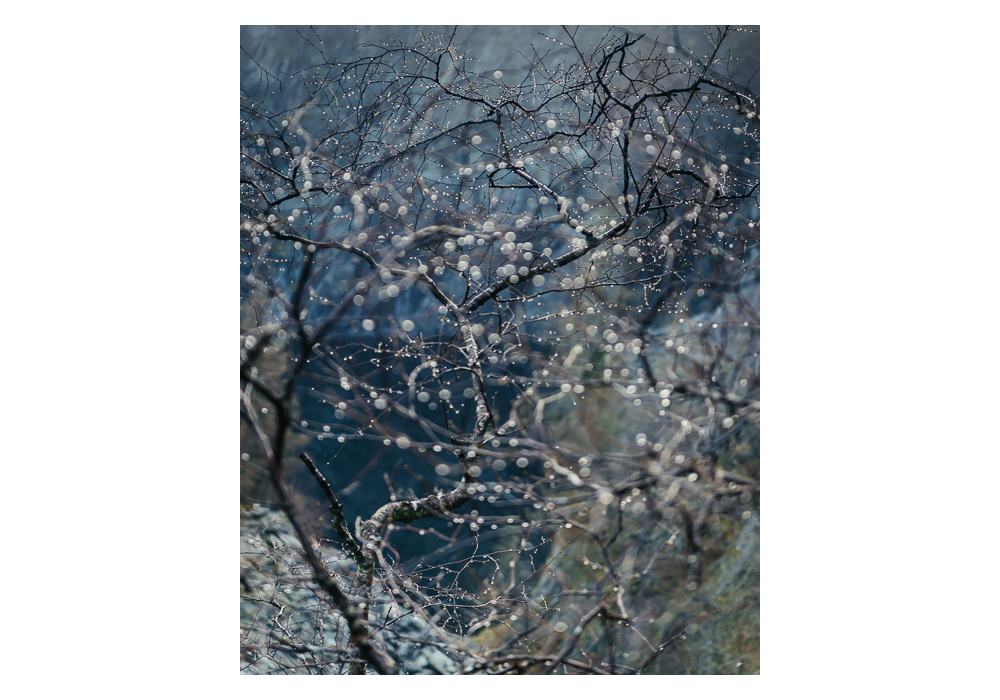
Tree of Pearls
A couple of hundred feet up from the quarry is Holme Fell Tarn. In actual fact this is one of two small reservoirs, the other one is right next to it but largely goes unnoticed and they were created in order to provide water to power the funicular lift at the quarry. This is an extraordinarily beautiful place in the right conditions. One of the little features that I love about this repetitive way of working is how you get to appreciate the little changes that happen between each visit.
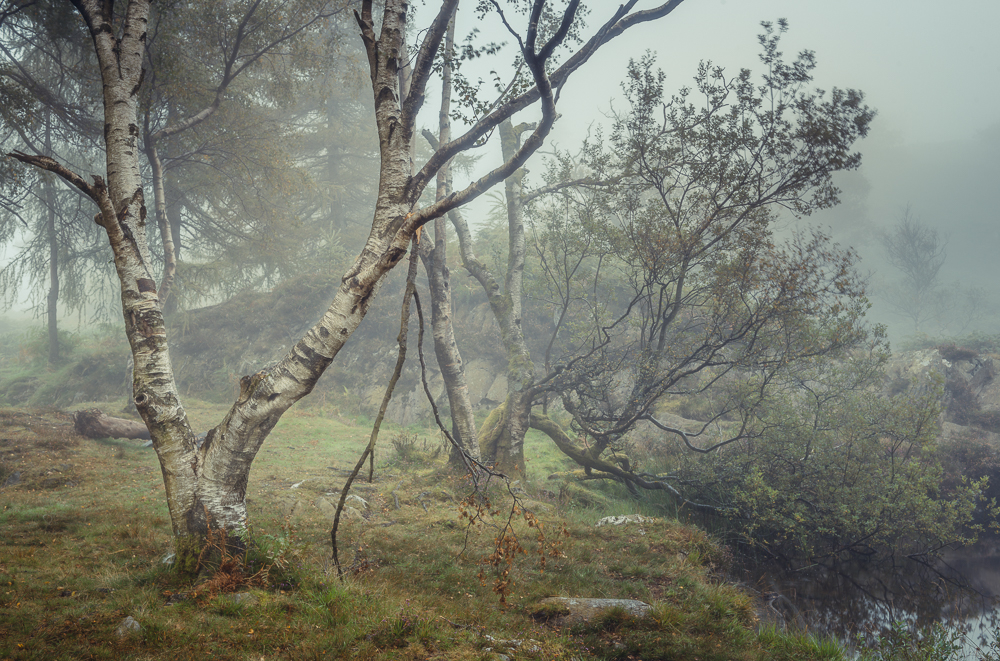
Tarn Tales III
A snapped branch, some bark eaten by deer, muddied footpaths betraying the intervening weather. These little changes at the tarn formed a part of my project entitled ‘Tarn Tales’, just a little series of photographs made with each one featuring a detail hinting at the slow changes that largely go unnoticed as we stride by. The view from the top of Holme Fell is magnificent, even having been up there over twenty times over the year I could never tire of it. Coniston Water to the south, then, clockwise, the overbearing dominance of Wetherlam shadowing the sister quarries at Tilberthwaite, the iconic Langdale Pikes – imperious as ever, and then over the tarn and concealed quarries towards the distant Helvellyn and Fairfield fells.
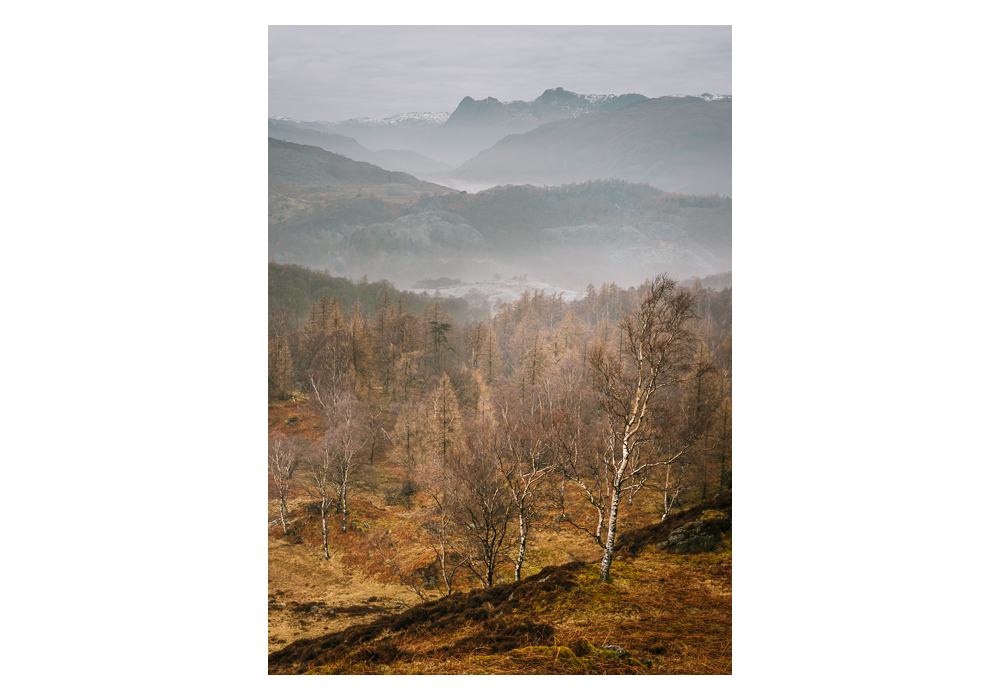
Mist Filled Valleys
Meandering back down from the undulating summits takes you through the heather and the scattered birch trees with the shrubbery and woodland becoming denser as you descend. At the tale end of the year I started to spend time in that lower woodland and, like Tarn Tales, began to see small signs of the underlying changes to the landscape. Almost imperceptible, nature taking its course and healing itself; I suppose you could call it nature’s ‘lifestyle management’.
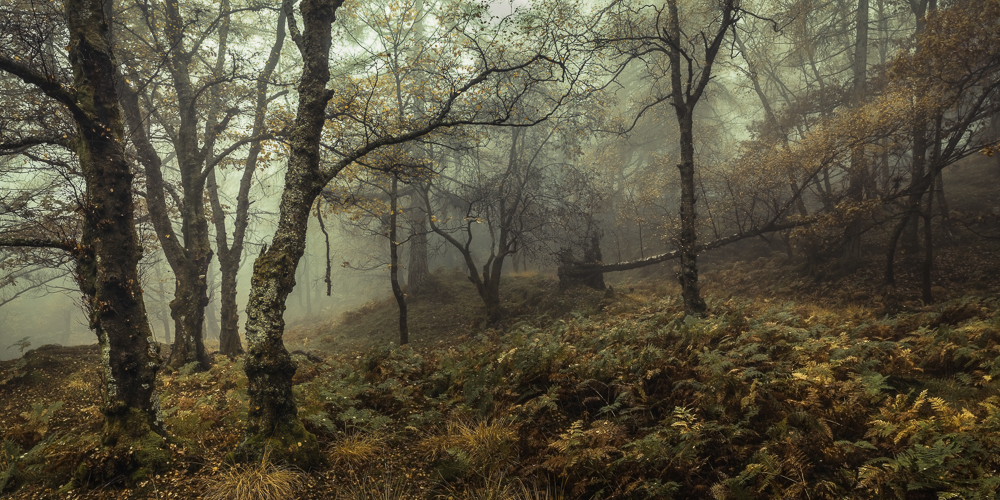
Woodland Tales
This project is ongoing in 2016, I’m probably going to expand the area a little to cover some of the nearby-disused workings. After that, who knows, I’ll just see how it goes, how I’m feeling and take it from there.
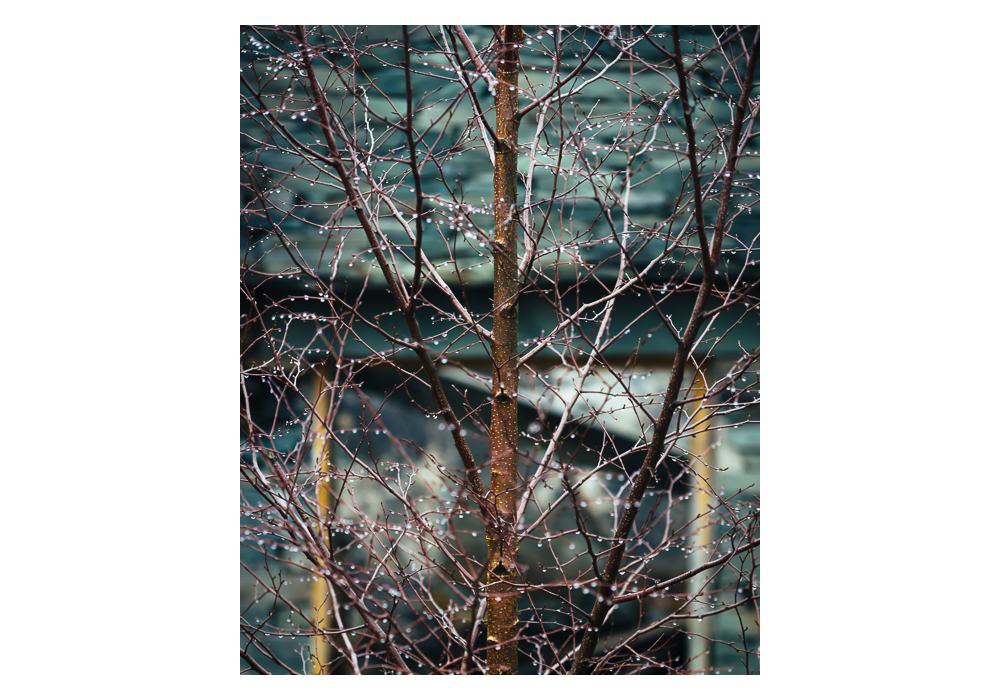
Mining Jewels
Keep up to date with the ongoing project on this link to Healing - Hodge Close and Holme Fell
